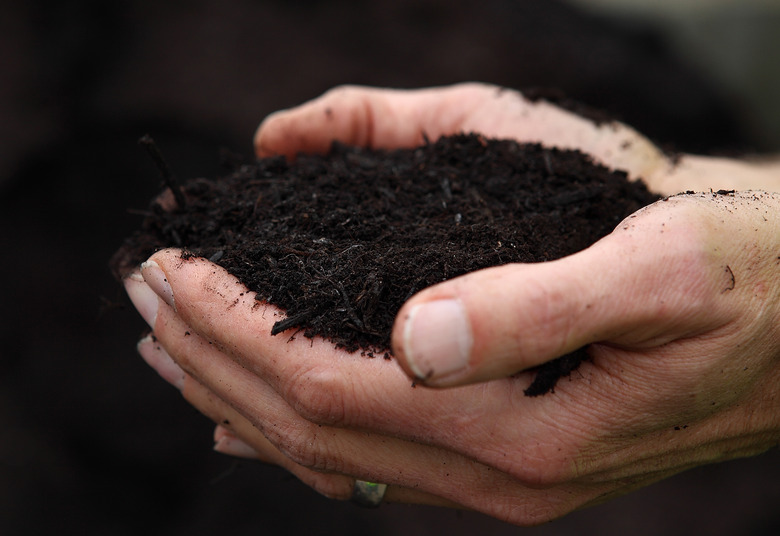The Best Soil For Potted Figs
Container-grown fig trees (Ficus carica) have advantages over those grown in the ground, especially if you garden in a cooler climate. The tree thrives in-ground in U.S. Department of Agriculture plant hardiness zones 8 through 10. Planted in a lightweight container, you can move your tree around to satisfy the tree's need for lots of sun and its dislike of cold. Plant your fig tree in the proper soil mix and pay attention to its needs.
Soil Mix
Step 1
Soil from your backyard is not a good choice for container growing, advises Oregon State University Extension Service. Garden soil is often too compacted to drain well, and it usually has too many weed seeds. Most organic potting soil mixes are a good alternative. Or you can make your own potting mix by combining 1 part sand, 1 part peat moss and 1 part bark or perlite. The potting mix should be loose enough to allow adequate drainage.
- Container-grown fig trees (Ficus carica) have advantages over those grown in the ground, especially if you garden in a cooler climate.
- Planted in a lightweight container, you can move your tree around to satisfy the tree's need for lots of sun and its dislike of cold.
Planting
Step 1
Fig trees require a pot that holds at least 15 gallons, and you should use a lightweight container to make it easier to move the pot. Choose a pot with drainage holes, and fill it partially with soil. Carefully prune some of the larger roots of the fig tree, especially if it was pot-bound in its previous container. As you place the tree in the pot, note the depth at which the plant was previously grown, and adjust your soil level to match, ensuring the soil surface is about 2 inches below the rim of the container. You can top the surface of the soil with mulch, if you like.
Fertilizer
Step 1
While you don't need to add fertilizer to the fig tree's soil mixture, you can add a complete, slow-release fertilizer at the beginning of each growing season — 1 tablespoon of fertilizer per 1 gallon of soil in your container, or according to the directions on the fertilizer's packaging. Take care not to over-fertilize your fig tree, which can result in it growing too fast and not producing fruit. If your fig tree's leaves are a deep green color, it doesn't need fertilizer.
- Fig trees require a pot that holds at least 15 gallons, and you should use a lightweight container to make it easier to move the pot.
- Carefully prune some of the larger roots of the fig tree, especially if it was pot-bound in its previous container.
Repotting
Step 1
Replace the soil mix in the tub containing your fig tree every three years. Gently loosen soil in the container and lift the tree out. If the tree is root-bound, you can repot the tree in a larger container, gently loosening the roots with your hands and brushing off any potting soil. Cut off any dead or broken roots. Or you can prune back the roots to control the size of the tree, use fresh soil mix, and repot it in the same container.
